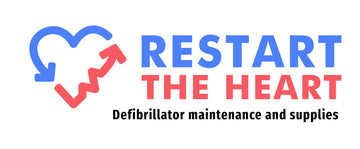AEDs in Schools – Protecting Teachers, Students and Visitors
The wellbeing of teachers, students, and visitors is central to the notion of a safe and nurturing learning environment. One vital aspect of wellbeing often overlooked in educational institutions is the incorporation of automated external defibrillators (AEDs) to help safeguard against sudden cardiac arrest (SCA), which can strike without warning, even in seemingly healthy individuals. As the leading cause of death globally, SCA is a silent threat that demands attention in our schools, and the implementation of heart-safe measures within these settings is an essential step towards fostering greater health and safety.
In this blog, we will explore the importance of having AEDs in educational institutions and discuss their benefits, including increased survival rates during cardiac emergencies and the potential to positively impact the community's safety culture. Furthermore, we will provide guidelines on creating an effective AED program tailored for schools, addressing factors such as AED selection, strategic placement, emergency response procedures, personnel training, maintenance, and legal requirements.
Join us as we delve into the vital topic of AEDs in schools, observing how the actions we take today can help forge a future where heart-safe learning environments are the norm for every teacher, student, and visitor.
Ensuring a Heart-Safe Learning Environment
The presence of AEDs in educational institutions is vital for several reasons:
- Increased survival rates: Quick access to an AED drastically improves the chances of survival during sudden cardiac arrest (SCA), particularly when used in conjunction with CPR.
- SCA in younger populations: Although SCA is often associated with older individuals, it can affect people of all ages, including children and teenagers, making it crucial to have AEDs available in schools.
- Reinforcing community safety culture: The integration of AEDs in schools demonstrates a commitment to building a safe environment for teachers, students, and visitors, promoting a positive safety culture within the community.
Developing a School AED Program
Creating a Heart-Safe Campus
To establish an effective AED program in your school, consider the following steps:
- Conduct a risk assessment: Evaluate your school's specific attributes, such as the number of students and staff members, building layout, and on-site activities, to identify potential risks and determine the need for AEDs.
- Engage key stakeholders: Consult with school administrators, teachers, parents, and students to gather their valuable input and involve them in the decision-making process.
- Choose appropriate AED devices: Work with a trusted supplier like Restart the Heart to select suitable AED units for your educational institution, taking into account factors like user-friendliness, maintenance requirements, and durability.
- Install AEDs strategically: Place AEDs in high-traffic, accessible areas, such as hallways, sports facilities, and administrative offices, ensuring rapid retrieval during emergencies. Use clear signage and instructions to highlight AED locations.
- Develop an emergency response plan: Create a comprehensive emergency response procedure for SCA scenarios, outlining guidelines for rapid AED access, role allocation, and communication with emergency services.
Training Teachers and Staff in AED Use
Empowering School Personnel with Life-Saving Skills
Providing AED and CPR training to school personnel is crucial in ensuring a prepared and confident response during cardiac emergencies. Equipping staff members with essential life-saving skills not only benefits those directly involved but also contributes to a collective culture where health and safety are valued in the learning environment.
Organise regular training sessions led by qualified instructors to maintain school personnel's competency levels, ensuring they are always ready to act in the event of an emergency. By incorporating AED and CPR training into staff development initiatives and school-wide safety plans, educational institutions can create a supportive and prepared environment for all members of the school community.
AED Maintenance and Legal Requirements
Maintaining Heart-Safe Devices and Complying with Regulations
Keeping AEDs in optimal working condition is essential in ensuring reliable performance during cardiac emergencies. Regularly inspect the battery life, electrode pad expiry dates, and overall condition of the unit to guarantee efficacy when required. Encourage staff and students to report any concerns regarding an AED's functionality so that any necessary maintenance or repairs can be addressed promptly.
Furthermore, schools must remain informed of legal requirements and regulatory guidelines related to AEDs in educational institutions. While regulations may vary between Australian states and territories, adhering to legal obligations and established standards is essential in maintaining compliance. Consult local regulatory bodies to familiarise yourself with relevant regulations concerning AEDs in your school setting.
Restart the Heart's Support for Schools
Your Partner in a Heart-Safe Learning Environment
Restart the Heart is dedicated to helping schools across Australia establish and maintain heart-safe environments by providing top-quality AED products and comprehensive training programs tailored to educational settings.
By partnering with Restart the Heart, schools can:
- Access expert advice on choosing the most appropriate AEDs for their specific environment.
- Receive ongoing support in implementing and maintaining a school AED program, including guidance on device placement, maintenance, and legal compliance.
- Benefit from thorough, accredited, and tailored AED and CPR training programs that equip school staff members with essential life-saving skills.
Conclusion
The presence of AEDs in schools is essential in safeguarding the well-being of teachers, students, and visitors on campus. By creating an effective AED program, offering training to school personnel, and ensuring AED devices are well-maintained, educational institutions can demonstrate their commitment to creating a heart-safe environment for all.
With the support of Restart the Heart, schools have access to the resources and expertise required to protect the heart health of their campuses. By prioritising heart-safe measures within the learning environment, educational institutions can contribute to a future where health and safety are integral elements of a thriving and nurturing space for all.

